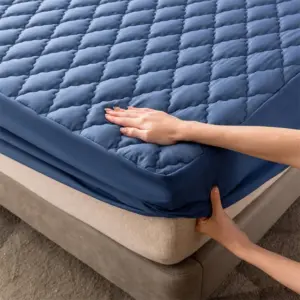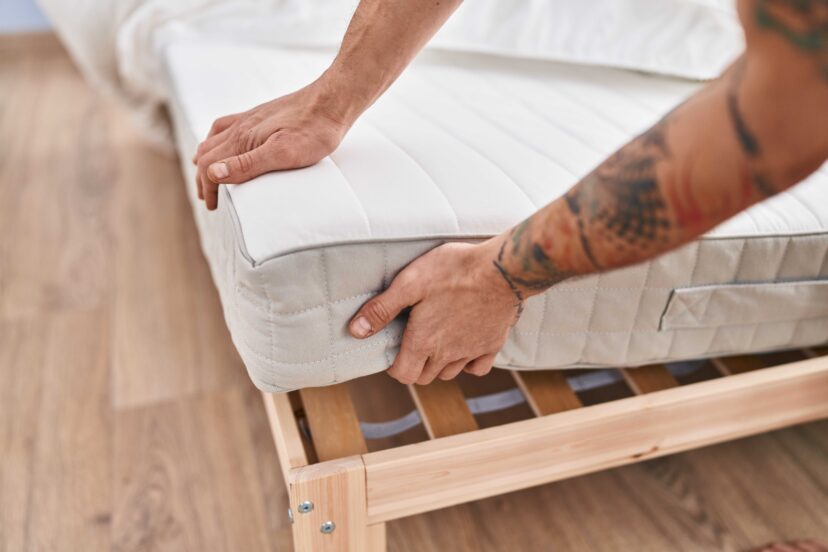Can You Wash Bed Bug Mattress Covers?
Anybody who has dealt with
The Importance of Mattress Covers
Mattress covers have several different functions in a household. Originally, they were meant to protect the mattress from normal wear and tear, spills and other potential stains over time. But as our environment changed, so did the uses of mattress covers. These days, they’re designed to keep the mattress safe from everyday dangers at the same time as from tiny invaders like dust mites and
This essential part of any bed, mattress covers often go unnoticed but they are crucial for our health and comfort. This protection extends the lifetime of your mattress and contributes to how you sleep. With the proliferation of allergens and pests we now find a mattress cover to be a necessity rather than a luxury.
The War Against Bed Bugs
Bed bugs are insects, not insects. They are sleep-stealing pests that have blighted many homes and hotels worldwide. They are tiny and stealthy creatures. They hide out throughout the day and they aren’t readily recognized however they emerge at night to feed on the blood of the prey. Their strength is even stronger. They may not eat for months and their rapid reproduction means a small infestation can quickly become a major problem.
The war against
Bed Bug Infestations Are On The Rise
Bed bug infestations have risen worldwide within the past 20 years. Factors such as increased global travel, resistance to common pesticides and lack of awareness have contributed to this surge. Once associated with filthy environments, these pests can be found in the most luxurious hotels and clean homes. They are an adaptable and resilient modern nuisance that is hard to combat.
This uptick in bed bug occurrences has put the responsibility on every homeowner to be prepared. We can no longer be ignorant or indifferent about these pests. Know their signs, understand their habits and take steps to keep our living spaces bed bug-free.
- Kills Bed Bugs and Bed Bug Eggs
- Kills Fleas and Dust Mites
- Non-staining, Leaves No Odor
Why Mattress Covers are So Important
As we’ve seen, the bed is the primary battleground for bed bug control. And here mattress covers come in handy. These covers prevent
In addition, these covers are a preventive measure as well as a reactive one. A bed bug must feed before it can grow and reproduce. By denying them that opportunity, mattress covers also prevent a small number of bugs from invading your home and not creating a full-blown infestation.

Do You Really Wash These Covers?
Absolutely! An advantage of modern bed bug mattress covers is that they are machine washable. Washing them helps keep them clean and gives any trapped
But washing helps – and it has to be done right. Correct washing or drying can compromise the protection of the mattress cover, making it less effective or useless against
Materials and Washing
Most covers for bed bug mattress are made of polyester mixed with polyurethane or vinyl. These materials are effective against
Also, be careful not to overwash. Washing the cover often may seem like a good idea, but it will wear down the materials faster. Follow a schedule or wash it if there’s been a spill or possible bed bug exposure.
- Kills Bed Bugs and Fleas
- Inhibits Reinfestation Up to 7 Months
- Use indoors in enclosed spaces
- Non Toxic
The Aftermath: Drying & Re-applying
Either way, drying the mattress cover correctly after washing is important as well. You should avoid high heat as it can damage the material. Air dry or use a low setting tumble dryer. When the cover is dry, fit it back on your mattress. A poorly fitted cover may have gaps or openings that
Check the cover for damage or wear after each wash, too. Even a tiny tear can let
Take Precautions to Take
When using a bed bug mattress cover, it should fit snugly without gaps or loose sections. A perfect fit is critical as even the smallest of openings may provide an entry point for these pests. Measure your mattress before buying so that it’s the correct size. Also, always inspect the zipper area. This is often the weakest part of many covers – close tightly and don’t allow bugs to get into it.
Be gentle also when putting the cover on or taking it off. Rough handling can cause tears and compromise its effectiveness. Remember, the mattress cover isn’t just for
Avoiding Common Mistakes
A common mistake would be thinking that because the cover is on, they are protected for life. Even the best mattress covers get old or break down. Check your cover regularly for wear and replace it if necessary. The other mistake is ignoring the rest of the bedding. The mattress may be protected but
Moreover, washing the cover with harsh chemicals or on high heat may lose its protective qualities. Follow manufacturer recommendations for cleaning. And remember, the mattress cover is only the beginning of the defense. You need a comprehensive plan to keep
Making Your Mattress Cover Last Longer
The key to maintaining your mattress cover is periodic maintenance. Make sure there is little friction on the cover. A mattress pad on top can help prevent unnecessary wear and tear. Always use mild detergents and do not wring it vigorously while washing. If there are spills, clean them immediately to avoid staining or damaging the fabric.
Rotate your mattress often. This ensures even wear on the mattress and cover. Place no sharp objects on the bed, as they may puncture or tear it. With these easy steps, your mattress cover can last longer and offer greater protection.
- Kills Bed Bugs & Their Eggs
- Surface spray to beds, mattresses and more
- Intended for indoor residential
- Helps to treat deep into cracks and crevices
Other Ways to Keep Bed Bugs Away
Regular Cleaning
One can not overstate the importance of routine cleaning when fighting
Empty the vacuum cleaner immediately afterward, placing the contents in a bag and dumping outside your home. Another powerful tool is steam cleaning, which kills bed bugs at any life stage. You can apply steam to seams, tufts, and folds of your mattress.
Additional Protective Measures
Beyond mattress covers, encasements for your pillows and box springs will provide another layer of protection. Put your bed far from the wall and don’t touch bedding. This prevents bugs from getting into your sleeping area. Investing in bed bug traps or interceptors under bed legs may also help deter these pests from climbing up.
A few essential oils such as tea tree or lavender are touted as natural repellents. They won’t eliminate an infestation but they are going to be a deterrent. Mix a couple drops with water and spray on your bed and furniture. But always patch test first to make sure there is no discoloration or damage.
Making the Most of Your Mattress Cover
Check-ups: And having a mattress cover is only the beginning. Check it periodically for signs of wear or damage. Ensure it’s always in top shape to ward off those pesky bugs.
Watching for Signs: Even with a cover, vigilance is key. Look for tiny brownish bugs or small rust stains on your sheets. If you spot any, act quickly.
Bed Bug-Free Sleeping
Finally, know that knowledge is power, even if the bed bug world seems overwhelming. With the right equipment and a watchful approach, each night can be a peaceful and bug free night.
- 100% Kill Efficacy Bedbugs, Mites, Eggs
- Lasting Protection
- USDA BIO-certified
- Plant Extract Based & Non-Toxic
- Child & Pet Safe
FAQs
How often does the mattress cover need to be washed?
Best every 2-3 months or if there is a spill.
Does hot water damage the mattress cover?
Extremely hot water may damage it – check the label.
Signs of a bed bug infestation?
Look for tiny reddish-brown bugs or rust-colored stains.
Can
A good cover should prevent this.
How long does a typical mattress cover last?
If taken care of properly, several years at least.








